#Shubun
Photo


Toshirô Mifune in Scandal (Akira Kurosawa, 1950)
#Scandal#Akira Kurosawa#Kurosawa#Toshirô Mifune#Toshiro Mifune#smoke#smile#1950#black and white#beauty#faces#Shubûn#Shubun
4K notes
·
View notes
Photo
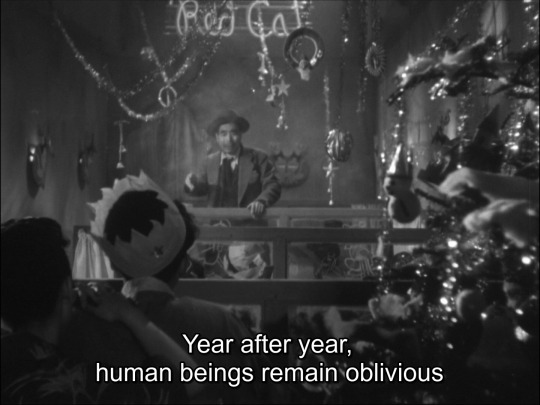

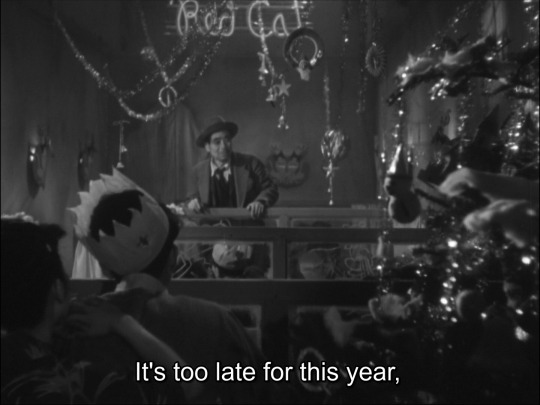






醜聞 (Shūbun - Scandal), 1950.
Dir. Akira Kurosawa | Writ. Akira Kurosawa & Ryūzō Kikushima | DOP Toshio Ubukata
#shubun#scandal#akira kurosawa#scene#dialogue#japanese film#1950s#happy new year from all of us here at this blog#which is just me
39 notes
·
View notes
Text

Kano Ryusetsu Hidenobu, Genji monogatari (The Tale of Genji), a pair of handscroll paintings, 1650-1750. British Museum
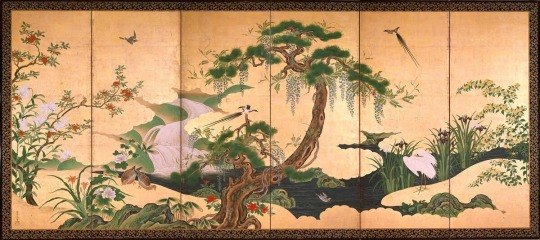
Kano Eino, Birds and Flowers of Summer, late seventeenth century. Suntory Museum of Art, Tokyo

Mountain Landscape, Tensho Shubun, early 15th Century
#japanese landscape#japanese artist#japanese art#asian art#nature scenery#Kano Eino#Tensho Shubun#Kano Ryusetsu Hidenobu#screen painting#scroll painting#japanese painting#japanese painter#Asian painter#art history#aesthetictumblr#tumblraesthetic#tumblrpic#tumblrpictures#tumblr art#tumblrstyle#artists on tumblr#aesthetic
15 notes
·
View notes
Text
cannibalism and the kin, a small research (carried over from my twitter thread)
more below the break
so, on twitter, someone mentioned artemy being a cannibal in canon (via drinking tinctures), so i looked into it a little. outright cannibalism isn’t explicitly practiced by anybody in the game (at least 2), though it’s mentioned in a nightmare that artemy has.

so, it’s pretty obvious that eating others is equal to something like betrayal and shown in a bad light. in this reddit post,


op makes a good point about how the kin would despise cannibalism due to it’s breaking of the cutting bodies rule. its noted that townspeople with closed minds do accuse the kin of cannibalism out of blatant xenophobia, though such an act would be considered unethical by the kin themselves not only in the context of the game, but also in real buryat culture.

black shamans were disliked due to bringing about diseases which is a central theme of the game. these shamans and their patron zayans were feared.
however, i found something interesting. this article mentions a cannibalistic spirit called mu-shubun, also present in the game in the form of executors. i think this was pretty neat considering the practice of khun-dolyo rites involving sick persons.

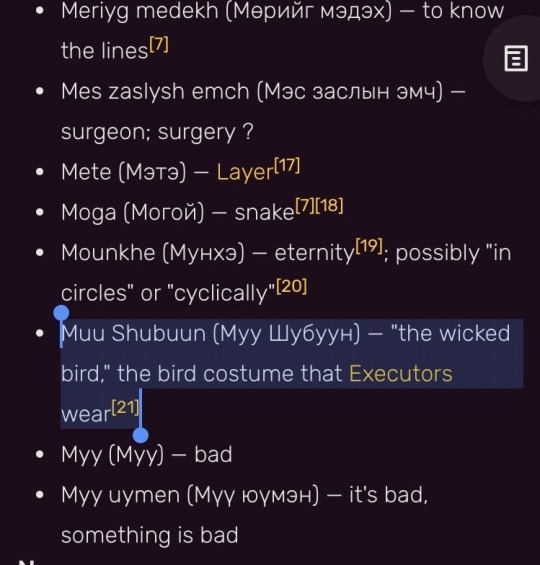

there’s a possibility that the kin could have accused artemy of being a black shaman during the time which he was tangled up in the mystery of his father’s death. i wish to look further into khun-dolyo and other buryat legends. you can read everything for yourself here.
21 notes
·
View notes
Photo

Elysion — Leon Bakst, 1906
#love how you can see the whole chain of influences and appropriations that led to this painting#from chinese mountain-water paintings to shubun and sesshu to the japanese influense on impressionsts#and the postimpressionists (van gogh`s reproductions of hiroshige`s prints are wonderfull#in case you haven`t seen them)#and the (post-)impressionist`s influence on japan`s later ukiyoe works#then coming back to form part of the bedrock of art nouveau#which so clearly made an impression on bakst#even if he wasn`t strictly part of the movement#art#leon bakst
7 notes
·
View notes
Text
A jitsuin (実印) is an officially registered seal. A registered seal is needed to conduct business and other important or legally binding events. A jitsuin is used when purchasing a vehicle, marrying, or purchasing land, for example.
The size, shape, material, decoration, and lettering style of jitsuin are closely regulated by law. For example, in Hiroshima, a jitsuin is expected to be roughly 1⁄2 to 1 inch (1.3 to 2.5 cm), usually square or (rarely) rectangular but never round, irregular, or oval. It must contain the individual's full family and given name, without abbreviation. The lettering must be red with a white background (shubun), with roughly equal width lines used throughout the name. The font must be one of several based on ancient historical lettering styles found in metal, woodcarving, and so on. Ancient forms of ideographs are commonplace. A red perimeter must entirely surround the name, and there should be no other decoration on the underside (working surface) of the seal. The top and sides (handle) of the seal may be decorated in any fashion from completely undecorated to historical animal motifs, dates, names, and inscriptions.
Throughout Japan, rules governing jitsuin design are very stringent and each design is unique, so the vast majority of people entrust the creation of their jitsuin to a professional, paying upward of US$20 and more often closer to US$100, and using it for decades. People desirous of opening a new chapter in their lives—say, following a divorce, death of a spouse, a long streak of bad luck, or a change in career—will often have a new jitsuin made.
The material is usually a high quality hard stone or, far less frequently, deerhorn, soapstone, or jade. It is sometimes carved by machine. When carved by hand, an intō ("seal-engraving blade"), a mirror, and a small specialized wooden vice are used. An intō is a flat-bladed pencil-sized chisel, usually round or octagonal in cross-section and sometimes wrapped in string to give a better grip. The intō is held vertically in one hand, with the point projecting from the carver's fist on the side opposite the thumb. New, modern intō range in price from less than US$1 to US$100.
The jitsuin are kept in secure places such as bank vaults. or hidden in a home. They are usually stored in thumb-sized rectangular boxes made of cardboard covered with embroidered green fabric outside and red silk or red velvet inside, held closed by a white plastic or deerhorn splinter tied to the lid and passed through a fabric loop attached to the lower half of the box. Because of the superficial resemblance to coffins, they are often called "coffins" in Japanese by enthusiasts and hanko boutiques. The paste is usually stored separately.
A ginkō-in (銀行印) is used specifically for banking; ginkō means "bank". A person's savings account passbook contains an original impression of the ginkō-in alongside a bank employee's seal. Rules for the size and design vary somewhat from bank to bank; generally, they contain a Japanese person's full name. A Westerner may be permitted to use a full family name with or without an abbreviated given name, such as "Smith", "Bill Smith", "W Smith" or "Wm Smith" in place of "William Smith". The lettering can be red or white, in any font, and with artistic decoration.
Since mass-produced ginkō-in offer no security, most people either have them custom-made by professionals or make their own by hand. They were traditionally made of wood or stone; more recently of ivory, plastic or metal, and carried in a variety of thumb-shape and -size cases resembling cloth purses or plastic pencil cases. They are usually hidden carefully in the owner's home.
A mitome-in (認印) is a moderately formal seal typically used for signing for postal deliveries, signing utility bill payments, signing internal company memos, confirming receipt of internal company mail, and other low-security everyday functions.
Mitome-in are commonly stored in low-security, high-utility places such as office desk drawers and in the anteroom (genkan) of a residence.
A mitome-in's form is governed by fewer customs than jitsuin and ginkō-in. However, mitome-in adhere to a handful of strongly observed customs. The size is the attribute most strongly governed by social custom. It is usually not more than 20 millimetres (0.79 in) in size. A man's is usually slightly larger than a woman's, and a junior employee's is always smaller than his bosses' and his senior co-workers', in keeping with office social hierarchy. The mitome-in always has the person's family name and usually does not have the person's given name (shita no namae). Mitome-ins are often round or oval, but square ones are not uncommon, and rectangular ones are not unheard-of; irregular shapes are not used. They can produce red lettering on a blank field (shubun) or the opposite (hakubun). Borderlines around their edges are optional.
Plastic mitome-in in popular Japanese names can be obtained from stationery stores for less than US$1, though ones made from inexpensive stone are also very popular. Inexpensive prefabricated seals are called sanmonban (三文判). Rubber stamps are unacceptable for business purposes.
242 notes
·
View notes
Text

Edo period egoyomi (picture calendar) for Kyowa 2 (1802) picturing the monthly and seasonal needs for a small mountain village.
...
More Information on Japanese Calendars and Timekeeping
See the previous post here.
...
Japanese Years
Today, most of the world uses the Gregorian calendar, introduced in 1582, to track years of the common era. That calendar's era is based on years since the perceived birth of Jesus: 2023 CE (current era) or AD (anno domini, year of the lord) 2023.
Edo period Japan obviously did not use the Gregorian calendar as its own calendar-keeping was influenced by China, not the west. In fact, Japan did not adopt the Gregorian calendar until 1873 but continues to use era names into the present day.
Japan's system of era names (nengo) originates from China and was permanently adopted in 701 under Emperor Monmu. It has been continuously in use since.
Until the end of the Edo period, era names were decided by court officials and could change frequently. A new era name was usually proclaimed after the ascension of a new emperor, but could also be changed due to some auspicious event or even due to natural disasters.
Since the adoption of era names, most have been in use for fewer than 10 years, sometimes for as short a period as 2 years, and only a handful have been used for periods of more than 30 years.
This website is extremely helpful in converting Gregorian years into Japanese eras, just enter the year!
...
Japanese Months
During the Edo period, the Japanese year was broken down into 12 lunar months of either 29 days (small months) or 30 days (large months) each.
Additionally, a special intercalary month (uru-zuki) had to be added every few years to keep the calendar in sync with the actual change of seasons.
In the modern Japanese calendar, the months are numbered rather than named: ichi-gatsu (first month, January), ni-gatsu (second month, February), and so on, but during the Edo period, monthly names, which date back to the Heian era, were in common use.
(Today, you might still find these old monthly names in poetry.)
Here they are with their western calendar equivalent:
January - mutsuki 睦月
February - kisaragi 如月
March -yayoi 弥生
April - uzuki 卯月
May - satsuki 皐月
June - minazuki 水無月
July - fumizuki 文月
August - hazuki 葉月
September - nagatsuki 長月
October - kannazuki 神無月
November - shimotsuki 霜月
December - shiwasu 師走
...
Japanese Weeks
The western concept of breaking individual months down into 7-day weeks did not exist in Edo period Japan. However, there is a rough equivalent that corresponds to the general concept of weeks: nijushi-sekki, 24 seasonal divisions that break the year down into "weeks" of 15 days each.
They are:
Shokan (small chill) – around January 6
Daikan (big chill) – around January 20
Risshun (start of spring) – around February 4
Usui (rain water) – around February 18
Keichitsu (going-out of worms) – around March 6
Shunbun (spring equinox) – around March 21
Seimei (clear and bright) – 15 days after the spring equinox
Koku-u (rain for harvests) – around April 21
Rikka (start of summer) – around May 6
Shoman (half bloom) – around May 21
Boshu (seeds of cereals) – around June 5
Geshi (reaching summer) – summer solstice – around June 21
Shohsho (small heat) – around July 7
Taisho (big heat) – hottest time of the year – around July 23
Risshu (start of autumn) – around August 8
Shosho (keeping out of the heat) – around August 23
Hakuro (white dew) – around September 7
Shubun (the autumnal equinox) – around September 23
Kanro (cold dew) – around October 8
Soko (frosting) – around October 23
Ritto (start of winter) – around November 8
Shosetsu (small snow) – around November 23
Taisetsu (big snow) – around December 8
Toji (reaching winter) – around December 22
More in-depth information about these, along with explanations of why they're called what they're called, can be found here.
...
Japanese Days
Individual named days, such as Monday and Tuesday, as we know them on the western calendar, also did not exist in Edo period Japan.
You wouldn't say "We meet on Wednesday." Instead, you would have used the date, "We meet on the fifteenth day," or perhaps even the phase of the moon, "We meet on the new moon."
Individual Japanese days are also not broken down into 24 equal hours of 60 minutes each.
Instead, people in the Edo period split their days into 12 hours (toki): 6 daytime hours, which were counted from sunrise to sunset, and 6 night-time hours, which were counted from sunset to sunrise.
Naturally, the length of these hours varied not only by time of year (winter daytime hours being obviously shorter than winter nighttime hours) but also by geographical location.
Daytime hours were broken down as follows:
Hour of the Rabbit (begins at sunrise)
Hour of the Dragon
Hour of the Snake
Hour of the Horse (noon)
Hour of the Goat
Hour of the Monkey
Nighttime hours were broken down as follows:
Hour of the Rooster (begins at sunset)
Hour of the Dog
Hour of the Pig
Hour of the Rat (midnight)
Hour of the Ox
Hour of the Tiger
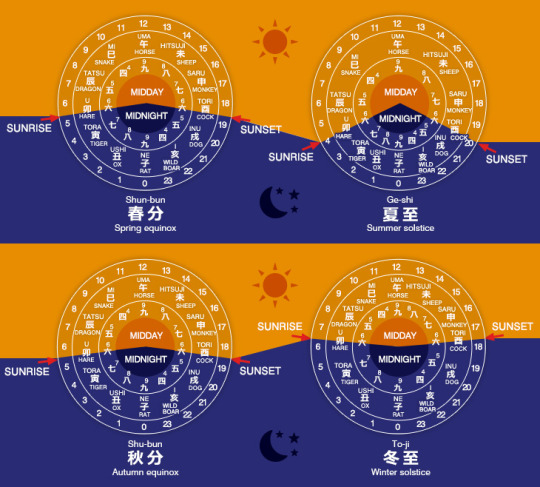
From the Seiko Museum.
#history notes#historical notes#history reference#historical reference#history research#historical research#Japanese calendar#calendars#Japanese era names#Japanese hours#are you confused yet?
15 notes
·
View notes
Text
Collection of Neos based on the Ichowan Pronouns
Ayabun (Ayapo - Xenogender)
Erobun (Epo - Masculine)
Nabun (Mepo - Androgynous)
Nibun (Niyopo - Agender)
Rebun (Redipo - Feminine)
Shubun (Naopo - Multigender/Plural Genders)
Yuibun (Unknown/Indeterminate Gender)
Nan (That)
6 notes
·
View notes
Text
Was tagged by @just-a-little-unionoid <3
Last movie: Once upon a time in America, watched it with my family which I do once every blue moon
Currently watching: I'm slowly chipping at Extraordinary Attorney Woo, and the remaining Lupin III TV Specials I haven't seen yet
Currently reading: The Colour of Magic by Terry Pratchett (rereading)
Last thing you researched for writing purpose: rituals around the Shinto holiday shubun no hi, and the layout of Mejiro-Tenso shrine
If you wanna do this, consider yourself tagged by me!
2 notes
·
View notes
Text
Holidays 9.22
Holidays
American Business Women’s Day
Band-Aid Day
Breakfast, Snack, Elevenses, Snack, Lunch, Snack, Tea, Snack, Dinner, Snack, More Snacks, Supper, Snack, and Bilgewack Celebration Day
Canterbury South Day (New Zealand)
Car-Free Day (Europe; Montreal, Canada)
Chainmail Day
Chong Chao (Macau)
Day of Bilbo
Day of Frodo
Dear Diary Day
Elephant Appreciation Day
Emancipation Day (Ohio)
Festival of Disappearances
First Day of Fall [Autumnal Equinox, Northern Hemisphere] (a.k.a. …
Alban Elfed (Celtic Winter Finding)
Autumnal Equinox (a.k.a. Mabon, Alban Elfed; Celtic, Pagan) [6 of 8 Festivals of the Natural Year]
Feast of Carpo (Celtic Goddess of Autumn)
Festival of Ragutiene and Ragutis (Slavic Goddess & God of Beer)
Festival of the Sea Goddess (Eskimo)
French Republican New Year (France)
Higan (Japan)
Kukulcan Snake God Celebration (Ancient Mayan)
Mabon begins (Northern Hemisphere; Neopaganism)
Miķeļi Festival begins (Latvia; The Week of Iron)
National Falls Prevention Awareness Day
Oenach Carman (Ancient Celtic)
Ostara begins (Southern Hemisphere; Neopaganism)
Proposal Day
Sendai Great Tug-of-War (Japan)
Shubun no Hi (Japan)
Spring Day (Argentina)
Svarog’s Day (Asatru/Slavic Pagan Mead Drinking Festival to God of Fire & Sky)
Flag Day (Norway)
Flaunt Your Favorite Beach Towel Day
Hobbit Day
International Day of Radiant Peace
Jeans for Genes Day (UK)
National Centenarian's Day
National Day (Saudi Arabia)
National Elephant Appreciation Day
National Girls’ Night In Day
National Laundry Workers Day
National Legwear Day
National Online Recovery Day
National Rock ’n’ Roll Dog Day
One Web Day [ website ]
Remote Employee Appreciation Day
Resistance Fighting Day (Estonia)
Thrue Bab (Blessed Rainy Day; Bhutan)
Treaty of Basel Day (Switzerland)
Trumpet Day (Mormons)
U.N.C.L.E. Day
World Car-Free Day
World Rhino Day
Food & Drink Celebrations
Cask Ale Week begins (UK; through 10.2)
Ice Cream Cone Day
National White Chocolate Day
4th Thursday in September
Arthur's Day (Arthur Guinness) [4th Thursday]
Remember Me Thursday [4th Thursday]
Independence Days
Brunei (from UK, 1984)
Bulgaria (from Ottoman Empire, 1908)
Mali (from France, 1960)
Switzerland (Becomes independent state, 1499)
Feast Days
Believe the Impossible Day (Pastafarian)
Boidromia (Honoring Apollon, god of rescue during war; Ancient Greece)
The Bottle (Muppetism)
Brother Dave Gardner Day (Church of the SubGenius; Saint)
Candidus (Christian; Saint)
Coya Raymi (Incan Moon Goddess Quilla)
Digna and Emerita (Christian; Saint)
Emmeram of Regensburg (Christian; Saint)
Feast of Mikeli (Harvest Celebration; Ancient Latvia)
Felix and Constantia (Christian; Saint)
Ignatius of Santhià (Lorenzo Maurizio Belvisotti; Christian; Saint)
Laud of Coutances (Christian; Saint)
Maurice (Western Christianity)
Paul Chong Hasang (Christian; One of The Korean Martyrs)
Phocas (the Gardener, or of Sinope; Christian; Saint)
Phocas, Bishop of Sinope (Christian; Saint)
Sadalberga (Christian; Saint)
Saintin (Sanctinus) de Meaux (Christian; Saint)
Septimius of Iesi (Christian; Saint)
Theban Legion (Christian; Saint)
Thomas of Villanova (Christian; Saint)
Philander Chase (Episcopal Church)
Ritual of the Netjers and the Two Lands (Ancient Egypt)
Schiller (Positivist; Saint)
Lucky & Unlucky Days
Butsumetsu (仏滅 Japan) [Unlucky all day.]
Premieres
The Band, by The Band (Album; 1969)
Baywatch (TV Series; 1989)
Black Rain (Film; 1989)
Das Rheingold, by Richard Wagner (Opera; 1869) [Ring of the Nibelung #1]
Dizzy Up the Girl, by The Goo Goo Dolls (Album; 1998)
Family Matters (TV Series; 1989)
Family Ties (TV Series; 1982)
Fiddler on the Roof (Broadway Musical; 1964)
Friends (TV Series; 1994)
Full House (TV Series; 1987)
Kingsman: The Golden Circle (Film; 2017)
The Lego Ninjago Movie (Film; 2017)
Lost (TV Series; 2004)
The Man from U.N.C.L.E. (TV Series; 1964)
Maverick (TV Series; 1957)
Prometheus Unbound, by Percy Bysshe Shelley (Lyrical Drama; 1820)
Queens of the Stone Age, by the Queens of a Stone Age (Album; 1998)
Se7en (Film; 1995)
Sports Night (TV Series; 1998)
Two and a Half Men (TV Series; 2003)
Veronica Mars (TV Series; 2004)
The West Wing (TV Series; 1999)
Calendar Changes
Libra (Balance) begins [Zodiac Sign 7; thru 10.23]
Today’s Name Days
Moritz (Austria)
Emerita, Katarina, Mauricije, Toma od Villanove (Croatia)
Darina (Czech Republic)
Mauritius (Denmark)
Marvo, Maur, Mauri, Maurits (Estonia)
Mauri (Finland)
Maurice (France)
Emmeram, Gundula, Mauritius, Moritz (Germany)
Fokas, Loizos, Louise, Phokas, Zografia (Greece)
Móric (Hungary)
Maria, Maurizio (Italy)
Maigurs, Māris, Marisa, Mariss, Morics (Latvia)
Tarvinas, Tomas, Virmantė (Lithuania)
Kåre, Kyrre (Norway)
Joachim, Joachima, Maurycy, Prosimir, Tomasz (Poland)
Móric (Slovakia)
Mauricio (Spain)
Maurits, Moritz (Sweden)
Druce, Drucilla, Maurice, Mauricio, Maury, Merrick, Morell, Morris, Morrison, Murray (USA)
Today is Also…
Day of Year: Day 265 of 2022; 100 days remaining in the year
ISO: Day 4 of week 38 of 2022
Celtic Tree Calendar: Muin (Vine) [Day 20 of 28]
Chinese: Month 8 (Guìyuè), Day 27 (Wu-Yin)
Chinese Year of the: Tiger (until January 22, 2023)
Hebrew: 26 ʼĔlūl 5782
Islamic: 25 Ṣafar 1444
J Cal: 25 Aki; Threesday [25 of 30]
Julian: 9 September 2022
Moon: 22%: Waning Crescent
Positivist: 12 Shakespeare (10th Month) [Metastasio]
Runic Half Month: Ken (Illumination) [Day 13 of 15]
Season: Autumn (Day 1 of 90)
Zodiac: Virgo (Day 30 of 31)
Calendar Changes
Autumn (a.k.a. Fall) [Season 4 of 4]
3 notes
·
View notes
Text
Holidays 9.23
Holidays
Al-Yaom Al-Watany (Saudi Arabia)
Asian Corpsetwt Day [Every 23rd]
Asteroid Day
Barbara Gordon Day
Batman Day (DC Comics)
Bi Visibility Day (UK)
Bonn Phchum Ben (Ancestors’ Day; Cambodia)
Celebrate Bisexuality Day (a.k.a. Bisexual Pride & Bi Visibility Day)
Checkers Day
Chuuk Liberation Day (Micronesia)
Day of the Genocide of Lithuania's Jews (Lithuania)
Dogs in Politics Day
Education Technology Day
First Day of Fall [Autumnal Equinox, Northern Hemisphere] (a.k.a. …
Alban Elfed (Celtic Winter Finding)
Autumnal Equinox (a.k.a. Mabon, Alban Elfed; Celtic, Pagan) [6 of 8 Festivals of the Natural Year]
Autumn Stroll Day
Fall Astronomy Day
Feast of Carpo (Celtic Goddess of Autumn)
Festival of Ragutiene and Ragutis (Slavic Goddess & God of Beer)
Festival of the Sea Goddess (Eskimo)
French Republican New Year (France)
Higan (Japan)
Kukulcan Snake God Celebration (Ancient Mayan)
Mabon begins (Northern Hemisphere; Neopaganism)
Miķeļi Festival begins (Latvia; The Week of Iron)
National Falls Prevention Awareness Day
Oenach Carman (Ancient Celtic)
Ostara begins (Southern Hemisphere; Neopaganism)
Proposal Day
Sendai Great Tug-of-War (Japan)
Shubun no Hi (Japan)
Spring Day (Argentina)
Svarog’s Day (Asatru/Slavic Pagan Mead Drinking Festival to God of Fire & Sky)
Flashbulb Day
Gray Cat Day
Grito de Lares (Puerto Rico)
Haryana Veer and Shahidi Divas (Haryana, India)
Holocaust Memorial Day (Lithuania)
I Have Not Yet Begun To Fight Day
Innergize Day [Day after Equinox]
International Day Against Sexual Exploitation & Trafficking of Women & Children
International Day of Sign Languages
International Hospitality Women’s Day
International Restless Legs Syndrome Day
Kyrgyz Language Day (Kyrgyzstan)
Landscape-Nursery Day
Learn to Code Day
National AFM Day (a.k.a. Acute Flaccid Myelitis Day)
National Acute Flaccid Myelitis Day
National Checkers Day
National Field Marketer’s Day
National Go With Your Gut Day
National Property Manager’s Day
National Redhead Appreciation Day
National Singles Day
National Teletext Day (UK)
National Temperature Control Day
National Volleyball Day
Neptune Day
New Year's Day (Constantinople)
Nintendo Day
Pancake Queen Memorial Day
Puffy Shirt Day (Seinfeld)
Restless Legs Awareness Day
Saffron Day (French Republic)
Speed Racer Day
Sügise Algus (a.k.a. Sügisene Pööripäev; Estonia, Finland, Sweden)
Teachers’ Day (Brunei)
Thrue Bab (Blessed Rainy Day; Bhutan)
Teal Talk Day
That'll Be the Day Day
West Nordic Day
World Maritime Day (UN)
Food & Drink Celebrations
Chewing Gum Day
Gastronomy Day (France)
Great American Pot Pie Day
National Apple Cider Vinegar Day
National Bacon Butty Day (UK)
National Baker Day
National Snack Stick Day
Za’atar Day
4th Saturday in September
American Frog Day [4th Saturday]
Cavan Day [4th Saturday]
European Mushroom Day [4th Saturday]
Fish Amnesty Day [4th Saturday]
International Rabbit Day [4th Saturday]
Kiwanis Kids' Day [4th Saturday]
Museum Day (Smithsonian) [4th Saturday]
National Colouring Day (Canada) [4th Saturday]
National Hunting & Fishing Day [4th Saturday]
National Public Lands Day [4th Saturday]
National Seat Check Saturday [4th Saturday]
National Wildlife Ecology Day [4th Saturday]
R.E.A.D. in America Day [4th Saturday]
Seat Check Saturday [4th Saturday]
Independence Days
Duchy of Prussian Britannia (Declared; 2014) [unrecognized]
Feast Days
Adomnán (Christian; Saint)
Augustalia (Ancient Rome)
Cicciolina Day (Church of the SubGenius; Saint)
Cissa of Crowland (or of Northumbria; Christian; Saint)
Citua (Feast to the Moon; Ancient Inca)
Corneille (Positivist; Saint)
Feast of Chukem (Deity of Footraces; Colombia)
Feast of the Ingathering (a.k.a. Harvest Home, Kirn or Mell-Supper; UK)
Festival of Papa, Wife of Rangi (Maori; New Zealand)
Festival of the Goddess Ninkasi (Sumerian Goddess of Brewing)
František Kupka (Artology)
Libra zodiac sign begins (Pagan)
Linus, Pope (Christian; Saint)
Manolo and Carlo Flamingo (Muppetism)
Paul Delvaux (Artology)
Padre Pio (a.k.a. Pio of Pietreclcina; Christian; Saint)
Sossius (Christian; Saint)
Suzanne Valadon (Artology)
Thecla (Roman Catholic Church)
Walk the Plank Day (Pastafarian)
Xanthippe and Polyxena (Christian; Saint)
Lucky & Unlucky Days
Butsumetsu (仏滅 Japan) [Unlucky all day.]
Fortunate Day (Pagan) [39 of 53]
Unlucky Day (Grafton’s Manual of 1565) [45 of 60]
Premieres
Abraxas, by Carlos Santana (Album; 1970)
Aja, by Steely Dan (Album; 1977)
Arsenic and Old Lace (Film; 1944)
Baa Baa Black Sheep (TV Series; 1976)
The Blacklist (TV Series; 2013)
Blonde (Film; 2022)
Brave Little Tailor (Disney Cartoon; 1938)
Bridges to Babylon, by The Rolling Stones (Album; 1997)
Bunker Hill Bunny (WB MM Cartoon; 1950)
Butch Cassidy and the Sundance Kid (Film; 1969)
Capture the Saint, by Burt Barer (Novel; 1997) [Saint #52]
Corpse Bride (Animated Film; 2005)
Daffy’s in Trouble (WB LT Cartoon; 1961)
Difficult Loves, by Italo Calvino (Novel; 1970)
Dolphin Tale (Film; 2011)
Educating Rita (Film; 1983)
Enola Holmes (Film; 2020)
Girls with Balls (Film; 2018)
The Goldfinch, by Donna Tartt (Novel; 2013)
Goofy Gymnastics (Disney Cartoon; 1949)
The Greatest Beer Run Ever (Film; 2022)
Heroes, by David Bowie (Song; 1977)
I’ve Got to Sing a Torch Song (WB MM Cartoon; 1933)
JAG (TV Series; 1995)
Jeepers Creepers (WB LT Cartoon; 1939)
The Jetsons (Animated TV Series; 1962)
Light of the Midnight Fun (WB MM Cartoon; 1939)
Mad About You (TV Series; 1992)
Moneyball (Film; 2011)
Modern Family (TV Series; 2009)
Mom (TV Series; 2013)
NCIS (TV Series; 2003)
Night of the Living Duck (WB LT Cartoon; 1988)
North, by Elvis Costello (Album; 2003)
The Nylon Curtain, by Billy Joel (Album; 1982)
One Tree Hill (TV Series; 2003)
Only When I Laugh (Film; 1981)
Parallel Lines, by Blondie (Album; 1978)
People Are Strange, by The Doors (Song; 1967)
Phantom of the Opera, by Gaston Leroux (Novel; 1909)
The Prophet, by Kahlil Gibran (Prose Poetry; 1923)
Rodent to Stardom (WB LT Cartoon; 1967)
Scooby-Doo! And the Goblin King (WB Animated Film; 2008)
The Shawshank Redemption (Film; 1994)
Sledge Hammer! (TV Series; 1987)
Storks (Animated Film; 2016)
Up a Tree (Disney Cartoon; 1955)
The Veldt, by Ray Bradbury (Short Story; 1950)
When I Was Cruel, by Elvis Costello (Album; 2002)
Whose Line Is It Anyway? (UK Improv Series; 1988)
Today’s Name Days
Helene, Thekla (Austria)
Elizabeta, Lino, Pijo, Tekla, Zaharija (Croatia)
Berta (Czech Republic)
Linus (Denmark)
Diana, Dolores, Tekla (Estonia)
Mielikki, Miisa, Minja (Finland)
Constant, Faustine (France)
Linus, Gerhild, Thekla (Germany)
Iris, Polixeni, Rais, Xanthippe, Xanthippi (Greece)
Tekla (Hungary)
Lino, Pio, Rebecca (Italy)
Ivanda, Omula, Vanda, Veneranda (Latvia)
Galintas, Galintė, Linas, Teklė (Lithuania)
Snefrid, Snorre (Norway)
Boguchwała, Bogusław, Libert, Minodora, Tekla (Poland)
Zdenka (Slovakia)
Constancio, Lino, Pío, Tecla (Spain)
Tea, Tekla (Sweden)
Autumn, Linnet, Linnette, Lynette, Lynn, Lynne (USA)
Today is Also…
Day of Year: Day 266 of 2024; 99 days remaining in the year
ISO: Day 6 of week 38 of 2023
Celtic Tree Calendar: Muin (Vine) [Day 19 of 28]
Chinese: Month 8 (Xin-You), Day 9 (Jia-Shen)
Chinese Year of the: Rabbit 4721 (until February 10, 2024)
Hebrew: 8 Tishri 5784
Islamic: 8 Rabi I 1445
J Cal: 26 Aki; Fiveday [26 of 30]
Julian: 9 September 2023
Moon: 59%: Waxing Gibbous
Positivist: 14 Shakespeare (10th Month) [Corneille]
Runic Half Month: Ken (Illumination) [Day 12 of 15]
Season: Autumn (Day 1 of 89)
Zodiac: Libra (Day 1 of 30)
Calendar Changes
Autumn (a.k.a. Fall) [Season 4 of 4]
Libra (Balance) begins [Zodiac Sign 7; thru 10.22]
0 notes
Photo







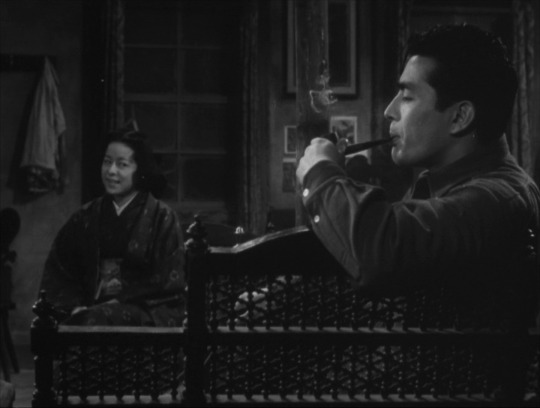

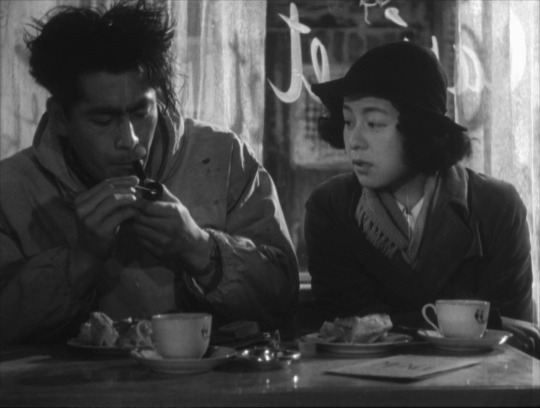
Scandal (Akira Kurosawa, 1950)
#films watched in 2022#Scandal#Akira Kurosawa#Shubûn#Shubun#seis#1950#Toshirô Mifune#Shirley Yamaguchi#Takashi Shimura#drama#mask#Yôko Katsuragi#Noriko Sengoku#Toshiro Mifune#black and white#back#smoke#windows#law
230 notes
·
View notes
Photo




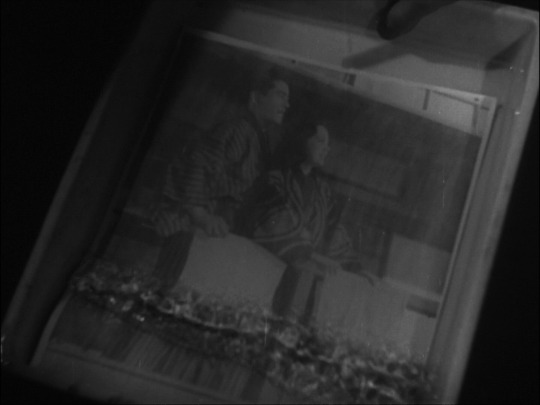



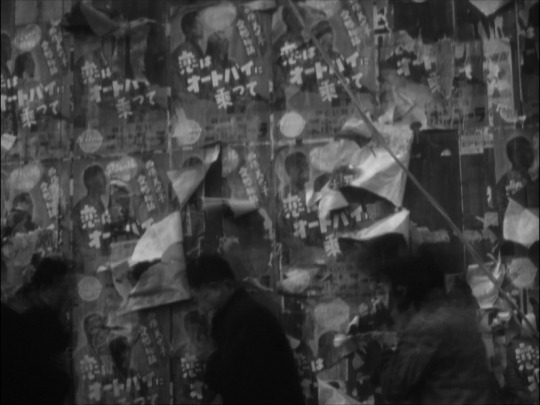

“For the first time in my life, I saw a star come into existence.”
醜聞 (Shūbun - Scandal), 1950.
Dir. Akira Kurosawa | Writ. Akira Kurosawa & Ryūzō Kikushima | DOP Toshio Ubukata
26 notes
·
View notes
Text

Antique Japanese Inlaid Peony Vase - Sterling Silver, Gold and Copper Showa 4th Shubun Carved
1 note
·
View note
Text
Seasons in Onmyodo: Shubun (Quiet Storms, Bugs and Farming)

From September 23rd through October 7th, the Japanese Season of Shubun ushers in the Autumn with 3 distinct Microseasons. These can greatly affect the game as your Travelers continue their Journey!
Kaminari Sunawachi Koe o Osamu
As the skies quiet down and the thunder ceases, the Oni Yokai become less powerful. Their anger is mellowed for a few days! Because of this, Oni will not attack Travelers during this time!
Mushi Kakurete to o Fusagu
Now the insects grow quiet, as they conceal themselves underground to hide from the coming cold. This makes Training a bit easier, and the Group will gain 2 extra Training Cards when ever they receive a Heavenly Blessing for Training.
Mizu Hajimete Karuru
The Farmers are busy draining the fields and this is hard work that keeps everyone focused. Due to this, Villages are not as open to entertaining Travelers as much as usual, so there is +1 Empathy cost to Travelers wishing to traverse them.
GAME TIP:
During Mushi Kakurete to o Fusagu, try to get the Heavenly Blessing for Training. You'll need to get three Tani is a row with the Training Icon!
#autumn#microseasons#onmyoji game#oni#yokai#abe no seimei#heian japan#solo games#shinto#momotaros#japanese folklore
1 note
·
View note
Photo

18 notes
·
View notes